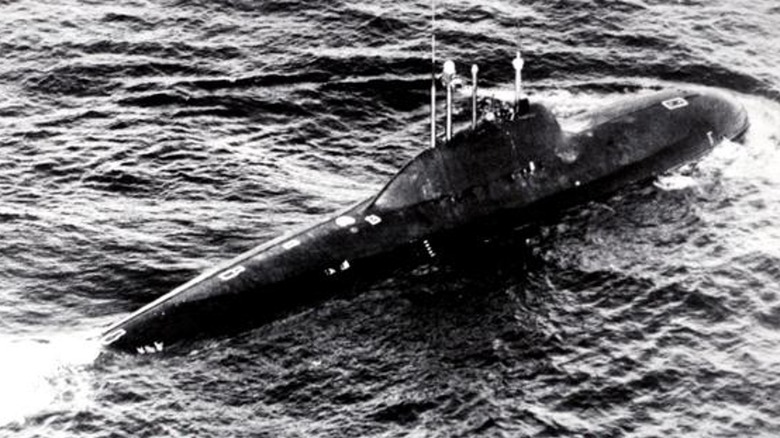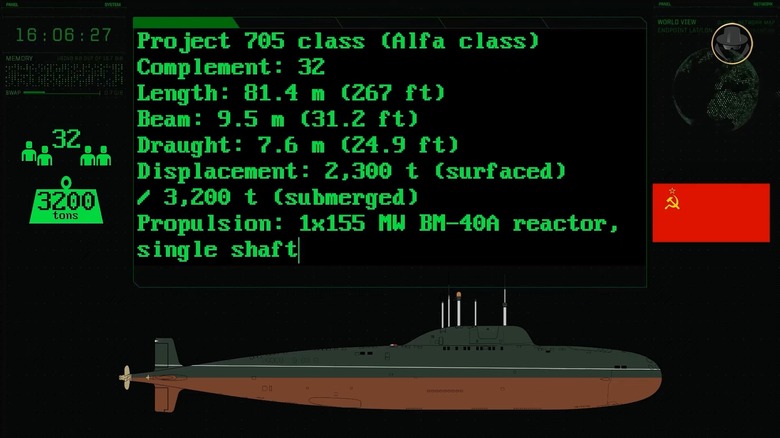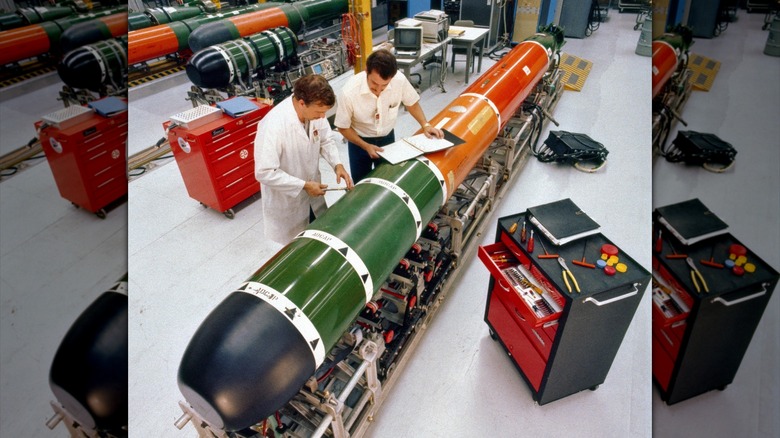Why The US Military Doesn't Build Its Subs With Titanium Hulls
The United States Navy operates a large fleet of submarines, and each class brings something different to the table. However, there's something puzzling about how they're constructed: None of the Navy's submarine hulls are built with titanium. Titanium is stronger, more corrosive resistant, lighter, and better than steel in some applications, so why aren't the Navy's subs at least coated with it?
Titanium is a pure elemental metal, whereas industrial steel is typically an alloy of iron and carbon. American submarines are primarily made using HY-80, a steel alloy of nickel, molybdenum, and chromium. It's reliable and durable, but it's not titanium. During the Cold War, the Soviet Union saw the benefits of building submarines with titanium and designed its Lira-class (NATO designation "Alfa") using the metal in its hulls. This made Soviet submarines faster, quieter, and able to reach lower depths than their American counterparts.
Ultimately, the reason the Americans stuck with steel is pretty practical.Titanium is much more expensive than steel alloys, and because of its properties, it's harder to use for construction. And it's not like carbon steel held the U.S. Navy back from fielding some of the most advanced nuclear submarines in the world. But let's a take a closer look.
The Lira-class submarines of the Soviet Union
The Soviets began developing the Lira-class submarine in the early 1960s, with the first entering the Soviet Navy's inventory in 1971. These nuclear-powered attack submarines could dive to 1,148 feet and were incredibly fast, capable of reaching speeds of 16 mph on the surface and an impressive 47 mph while submerged. While that may not sound fast for something like a car, for a sub, it was unprecedented.
For comparison, Los Angeles-class fast attack submarines , which are some of the oldest military submarines still in service, reach speeds of 29 mph. Lira-class subs were designed to move in, fire torpedoes, and move out without being put at too much risk. They were highly capable in this regard, but being products of the Cold War, they never saw combat. Lira-class subs were also highly automated, requiring only 32 personnel to operate. The Soviets constructed seven subs and retired all of them by 1996. Conceptually, using titanium for the Lira-class' hull design was a game-changer, but it was problematic.
The metal is challenging to use in most normal applications, and sub construction is even harder. Proper welds are difficult, as mistakes in the process can make titanium brittle — the last thing you'd want in a submarine's hull. Several boats' hulls had cracks, requiring costly and difficult repairs. They were incredibly expensive to maintain and much louder than desired, which is likely why they were retired and the Russian Navy abandoned the practice of using titanium in hull construction.
How the U.S. responded to titanium submarines
When the U.S. learned of the Soviet Union's plan to build titanium-hulled submarines, it could have developed its own fleet of similar subs to match the speed and depth capabilities of the Lira class, though the metal was hard to come by in the West. But that's not how the U.S. countered the threat.
The Americans instead opted to put their money into the development of new torpedoes. Why build a fleet of expensive submarines when you can create a torpedo specifically designed to take them out? That thinking resulted in the development of the Mk. 48 Torpedo, a heavyweight torpedo designed specifically for anti-submarine warfare (ASW), though it was more than capable of taking out surface ships too.
The Mk. 48 Torpedo could reach speeds of 72.5 mph, which made it more than a match for the Lira-class submarine's speed. Additionally, the Americans developed the RUM/UUM-125 Sea Lance anti-submarine missile, which was ultimately canceled but was capable of carrying the Mk. 50 Advanced Light Weight Torpedo (ALWT), and would have been used as an anti-submarine standoff weapon. Essentially, the West's response to the Lira-class submarine wasn't to create a new boat with matching capabilities; instead, the Americans simply developed a bigger stick.


